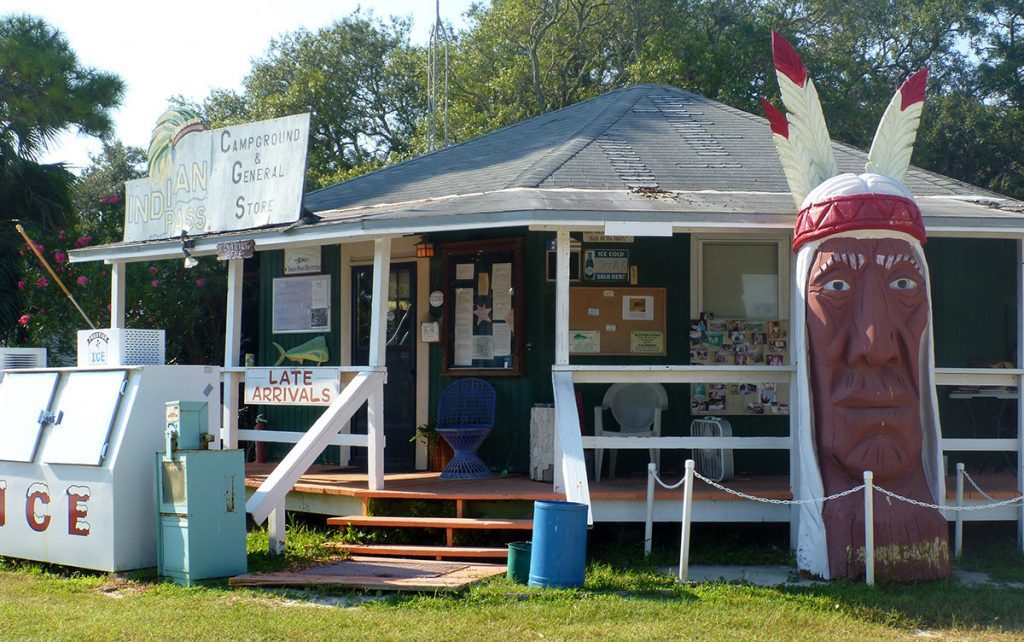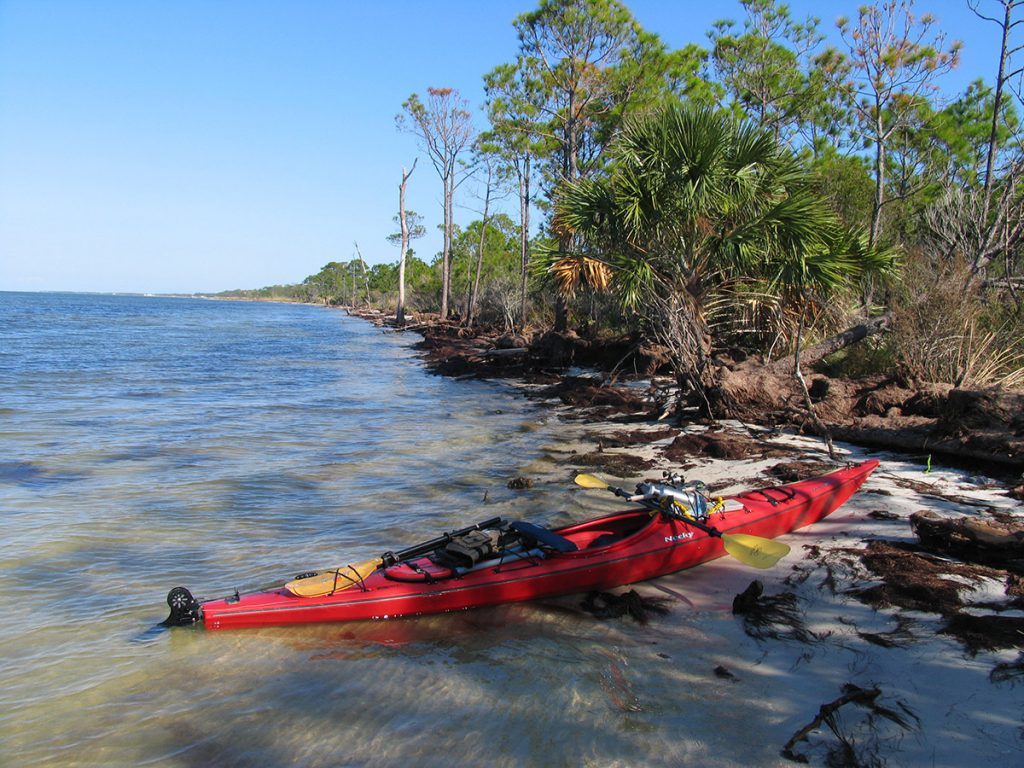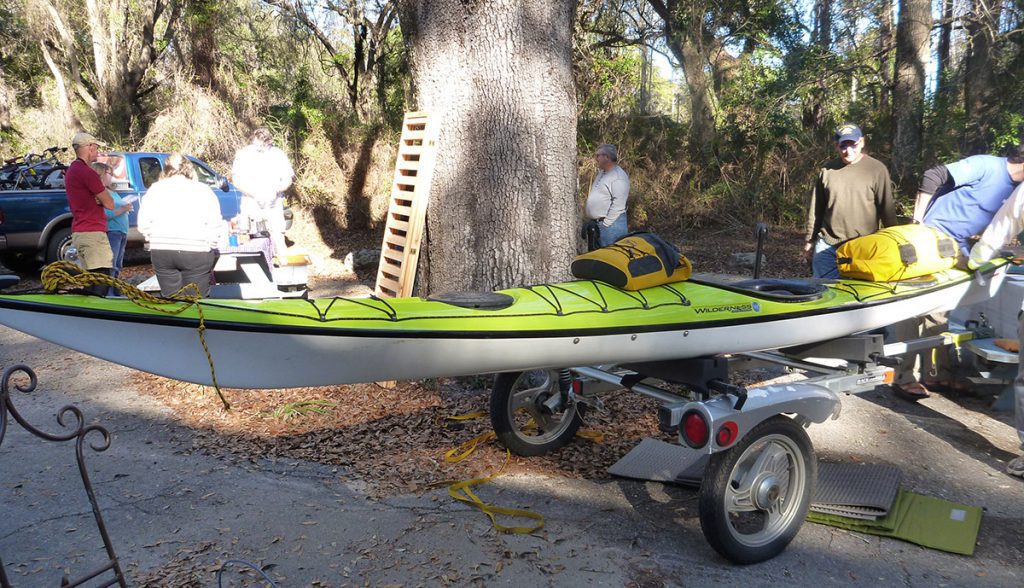On the Florida Circumnavigational Saltwater Paddling Trail, you could kayak from Pensacola to Jacksonville. Don’t have that kind of time? Luckily, you can plan trips of any length along the coast and try it out. Learn more below.
Rob Diaz de Villegas WFSU-TV
It would be the adventure of a lifetime. If you had two or three months, and a few weeks to plan it out, you could kayak along all of Florida’s coast, from Pensacola to Jacksonville. Completing the Florida Circumnavigational Saltwater Paddling Trail (FCSPT) would be a daunting task; luckily, there are many smaller adventures to be had along the trail as well.
The Florida Department of Environmental Protection’s Office of Greenways and Trails (OGT) manages the trail. That doesn’t mean that they’ve placed trail markers along all of Florida’s coast, or that they go out and clear the waters for trail users. It’s not quite like a land trail. What they have done is researched and mapped the routes, and created resources to help plan a trip.
The biggest challenge in putting together this kind of multi-day (or month) trip is finding campsites along the way. That work was done by Doug Alderson, who we meet in the video. The key is having these sites within a day’s paddle of each other.
And this is the beauty of the trail. Because of the way sites are spaced, you can plan trips that are day, two days, or a week long. It takes a bit of planning, and it’s not for beginners, but you can consult OGT (Doug’s contact is on the trail page) for more information.

The Indian Pass Campground and General Store is a potential stopping point along the trail. Indian Pass is directly across from St. Vincent Island, which you can visit, but not camp on.
The Forgotten Coast Segment
In the video, we’re looking at a five day stretch of the trail, the Forgotten Coast segment. It starts at the tip of Cape San Blas, in St. Joseph Peninsula State Park. From there, you can camp at Indian pass, St. George State Park, and Bald Point State Park, to name a few. There are many options, which is part of the fun, and challenge, of planning this kind of trip.
Since we produced this piece, this has been split into two segments (the link takes you to the trail segments page, where you can download PDFs). Segment 4 has info and a map on the trail between Cape San Blas and St. George Island; and segment 5 has info and a map from Crooked River in Tate’s Hell State Forest through the St. Marks National Wildlife Refuge.
More Kayak Camping Information
Since we originally produced this video in 2011, Georgia Ackerman and Rick Zelznak (who owned the Wilderness Way at the time), gave us a great demonstration of how to plan for a kayak camping trip. Think about it- all of your food, water, camping gear, toiletries, etc. have to fit in your kayak. On the Circumnavigational Trail maps, you’ll see places where you can buy more food or refill water. However, making the best use of your kayak space, and being organized, will go a long way in making a smoother trip.
The demonstration was based on Georgia’s RiverTrek 2011 experience. We later joined her on this 5 day kayak adventure down the Apalachicola River, completing the trip in 2012 and tagging along for stretches in 2013 and 2015 (that year, I brought along my four year old son for a couple of days).



5 comments
Hi, Rob,
I really enjoyed the video about the Forgotten Coast segment of the FCSPT. Here’s a link to a YouTube video promoting paddling the Apalachicola River: Paddle the Apalachicola River.
Great story. Sounds like Dan and Deb VanVleet really know the bay. Makes me want to go paddling. Rob your history of the coast was intrestig as well. Thank you, Jim Lebo
[…] as Florida’s coordinator for paddling trails. If you don’t remember, here’s a link to the video for which we interviewed him on the Florida Circumnavigational Saltwater Paddling Trail. […]
[…] you know where you can find outfitters and stores to restock during your multi-day adventure. Watch our video on the Forgotten Coast Segment of the Circumnavigational Trail. Elevated river banks, like this one at Bloody Bluff, make for good camping in the Apalachicola […]
[…] turtles; endangered salamanders and freshwater mussels. One of this year’s paddlers, Doug Alderson, has done Rivertrek before and wrote about it in his book, “Wild Florida Waters.” He […]
Comments are closed.